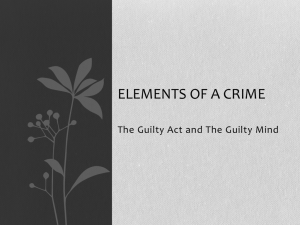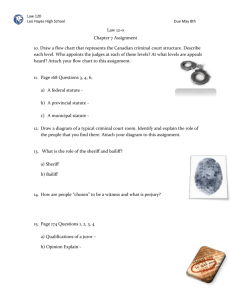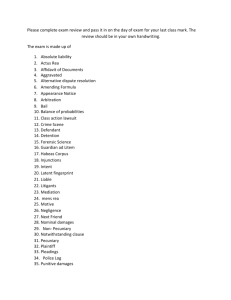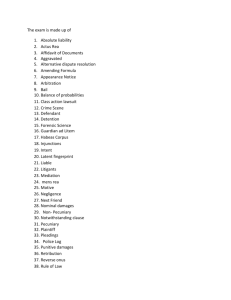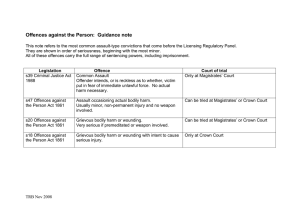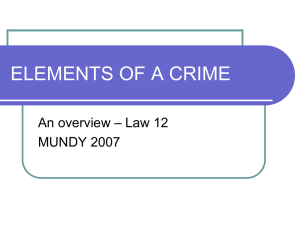Unit 256 Principles of criminal liability
advertisement
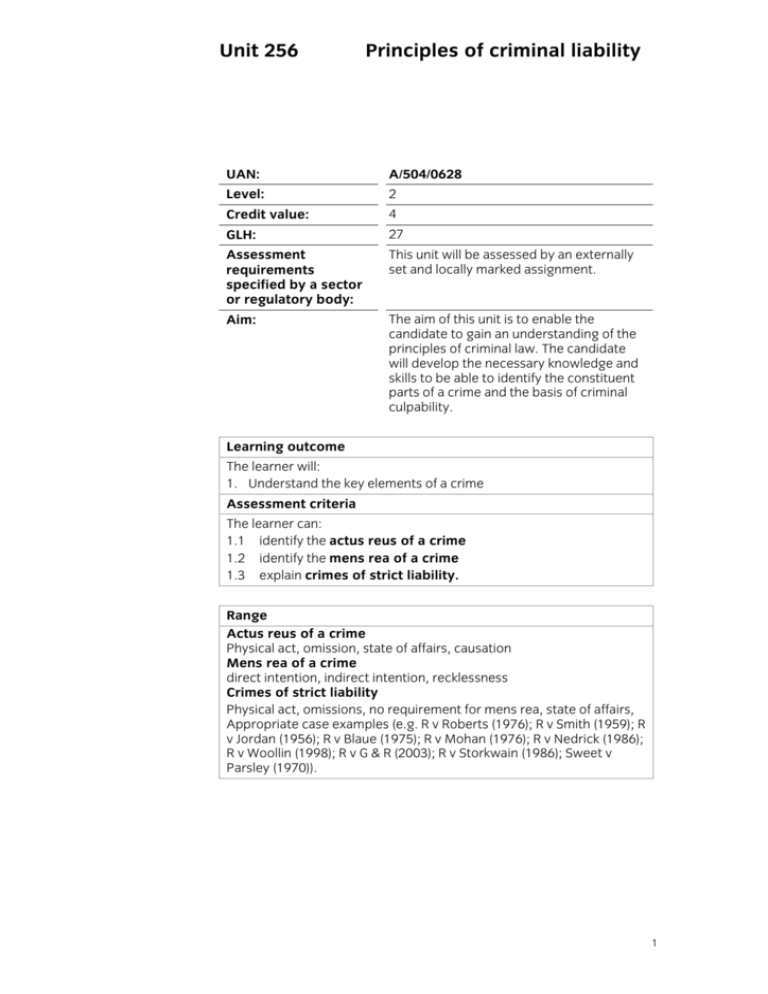
Unit 256 Principles of criminal liability UAN: A/504/0628 Level: 2 Credit value: 4 GLH: 27 Assessment requirements specified by a sector or regulatory body: This unit will be assessed by an externally set and locally marked assignment. Aim: The aim of this unit is to enable the candidate to gain an understanding of the principles of criminal law. The candidate will develop the necessary knowledge and skills to be able to identify the constituent parts of a crime and the basis of criminal culpability. Learning outcome The learner will: 1. Understand the key elements of a crime Assessment criteria The learner can: 1.1 identify the actus reus of a crime 1.2 identify the mens rea of a crime 1.3 explain crimes of strict liability. Range Actus reus of a crime Physical act, omission, state of affairs, causation Mens rea of a crime direct intention, indirect intention, recklessness Crimes of strict liability Physical act, omissions, no requirement for mens rea, state of affairs, Appropriate case examples (e.g. R v Roberts (1976); R v Smith (1959); R v Jordan (1956); R v Blaue (1975); R v Mohan (1976); R v Nedrick (1986); R v Woollin (1998); R v G & R (2003); R v Storkwain (1986); Sweet v Parsley (1970)). 1 Learning outcome The learner will: 2. Understand the main fatal and non-fatal offences against the person Assessment criteria The learner can: 2.1 identify the range of fatal offences against the person 2.2 identify the range of non-fatal offences against the person. Range Fatal offences against the person Murder, voluntary manslaughter, Involuntary Manslaughter (unlawful act) and (gross negligence) Non-fatal offences against the person Assault, Battery, Offences Against The Person Act 1861 – Section 47 assault occasioning actual bodily harm, Section 20 grievous bodily harm and wounding, Section 18 grievous bodily harm and malicious wounding, Chart actus reus and mens rea of each offence. 2
